| Designer | Franze |
| Map | Syria |
| Running time | 12 hours |
| Type | PEvPE, continuous |
| Slots | 164 |
| Date | 26 April 2016 |
| Start time | 0800 |
| Version | vOB256_006u |
| DCS Version | 2.8 |
| Skill level | Moderate to Experienced |
Overview
Trivial Perplexion is a continuous running scenario centered around the town of Reyhanli. Red and Blue forces respawn constantly in an attempt to take this town and prevent the opposing side from retaking it. It is a complex scenario with many factors affecting the outcome, including AI helicopters, aircraft, and ground forces.
The scenario works on two point systems: strategic points, which remain static and are depleted every hour that a side does not control Reyhanli; and tactical points, which refresh every 45 minutes and are depleted by AI groups respawning. This allows one side to achieve temporary superiority by depleting the other side of tactical points and thus halting their ability to deploy forces until the points refresh. Conversely, strategic points are lost for every hour that Reyhanli remains contested or uncontrolled; when one side controls the town, the other side loses two points while the controlling side only loses one.
The scenario is designed so that front line forces are equipped with outdated equipment which gives way to much more advanced, high-threat equipment further behind the lines. This means that as tactical objectives are achieved, going for the next objectives in the line are that much more difficult and require more coordination between players to succeed.
Objectives
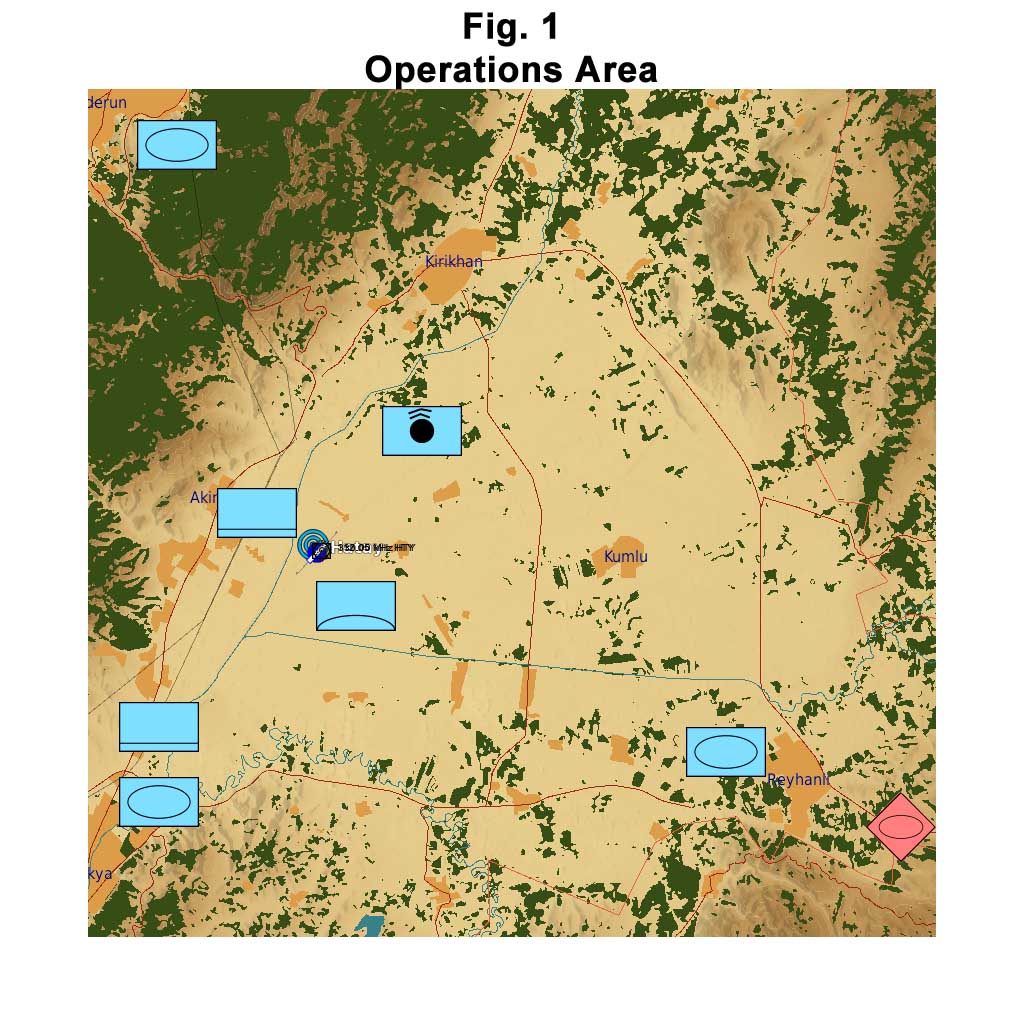

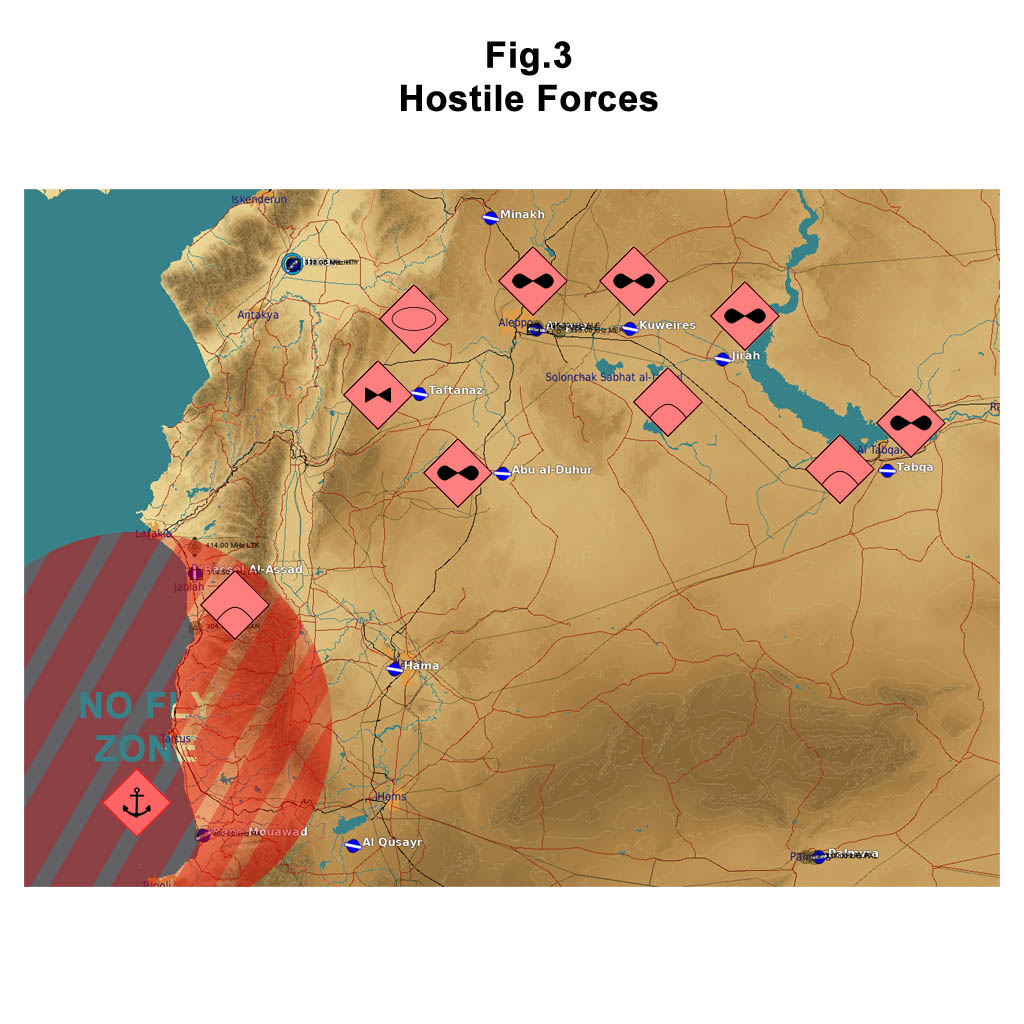
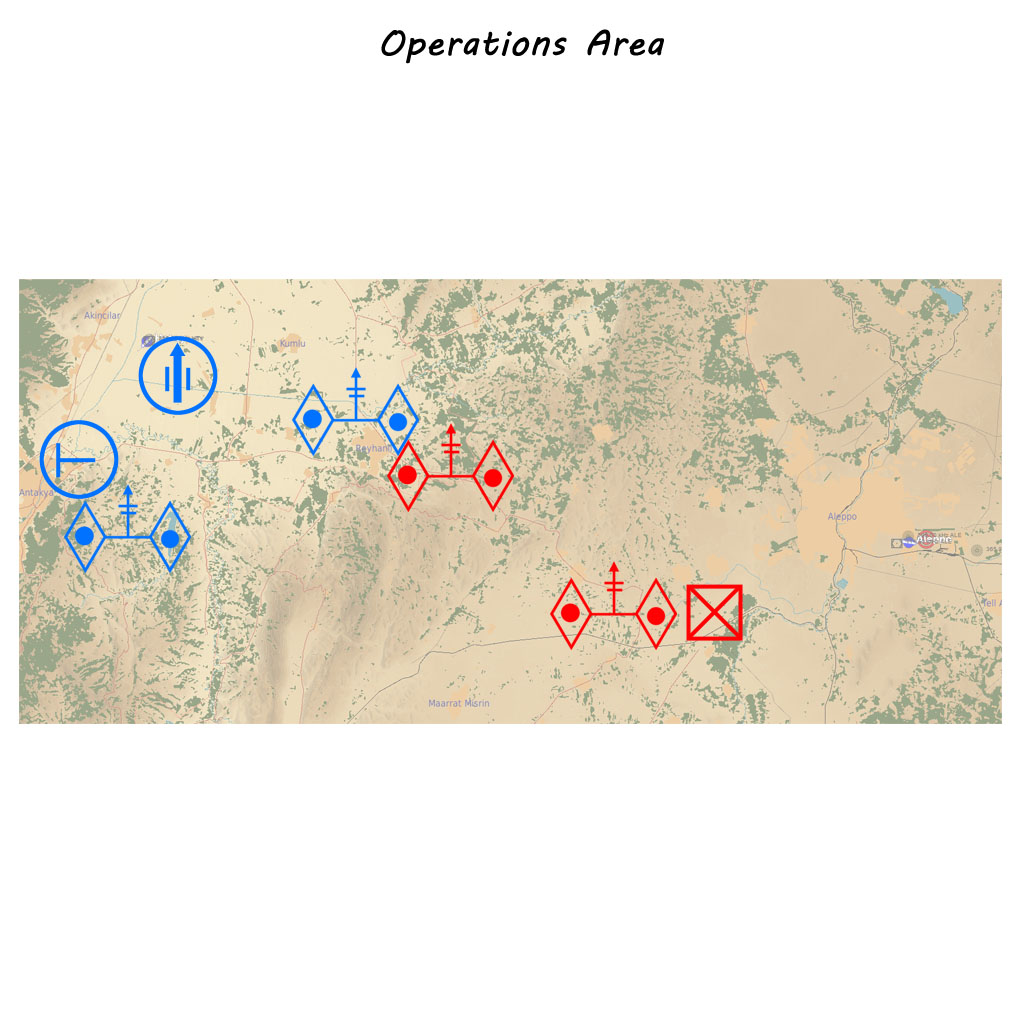

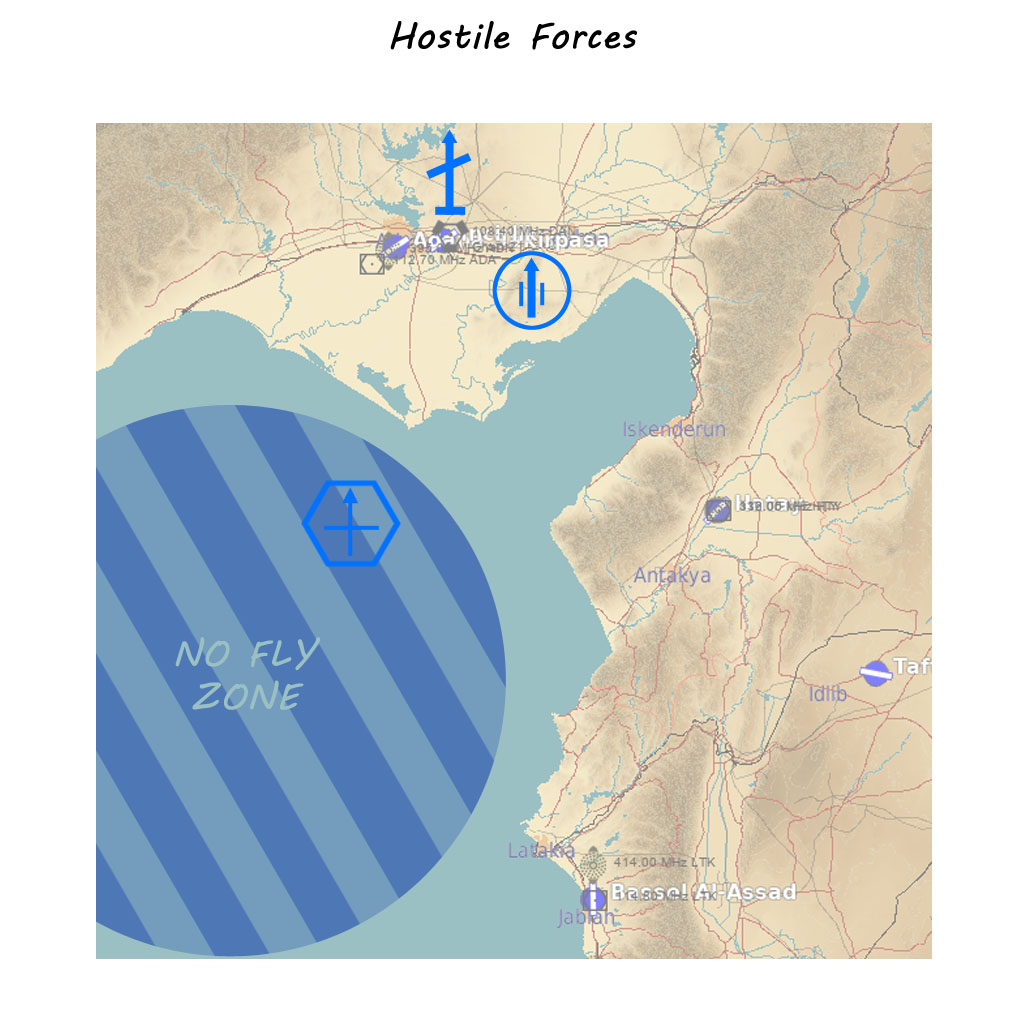

The scenario can be won in one of two ways: achievement of a side’s tactical objectives or strategic point loss. To achieve a tactical success, three objectives must be completed; to achieve a strategic success, one side’s strategic points must be depleted before the other’s.
The primary objective is control of Reyhanli; if either side has any forces, no matter how small, present within the town limits, the town is considered contested. If no side has forces present, the town is considered empty. In the first case, strategic points are depleted by one for both sides for each hour that passes; in the second, strategic points are depleted by two points for both sides for each hour that passes. If either side controls the town, that side loses only one point while the other side loses two.
The secondary objective for both sides is the destruction of the opposing side’s vehicle depot. If this depot is destroyed, that side will lose the ability to respawn ground forces to attack Reyhanli.
The final objective is destruction of warehouses supplying airfields at Hatay for Red and Aleppo for Blue.
Once all three objectives are achieved for either side, then that side wins the mission. Note that it is possible for two out of three objectives to be completed, thus resulting in Reyhanli being either contested or empty; in such a case, the scenario may become dependent on strategic points to determine a winner (or a draw).
As an alternative, a side may hold Reyhanli and force the other side to timeout by running out of strategic points. Another possibility is destruction of all supporting airfield warehouses, which will remove a side’s ability to supply their aircraft and thus result in a loss.
Considerations

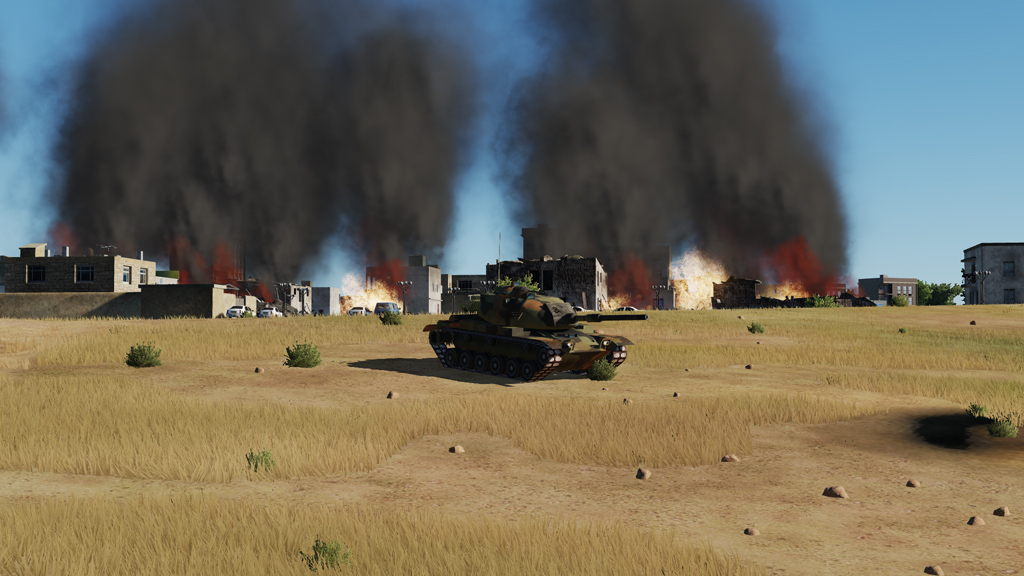

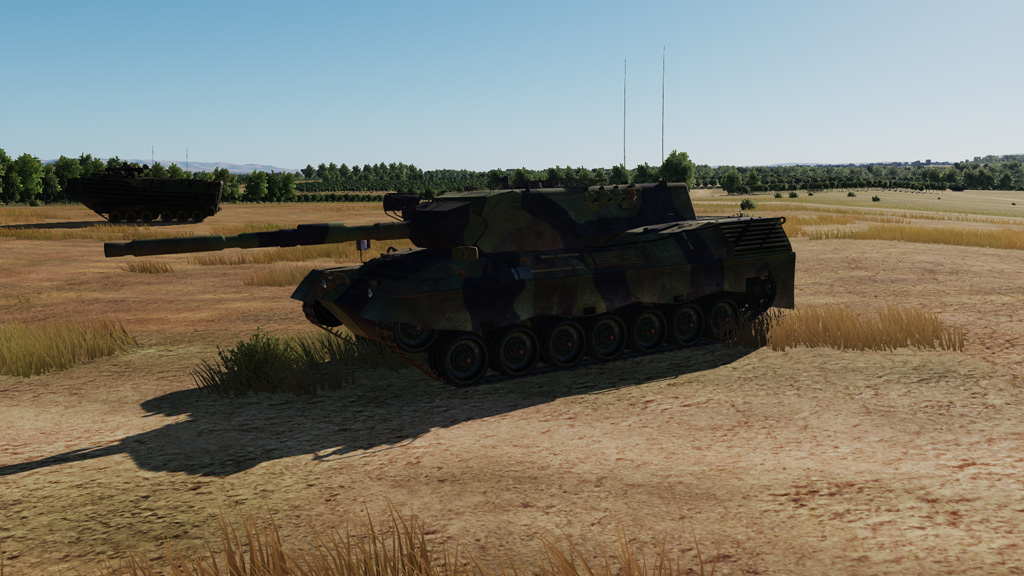

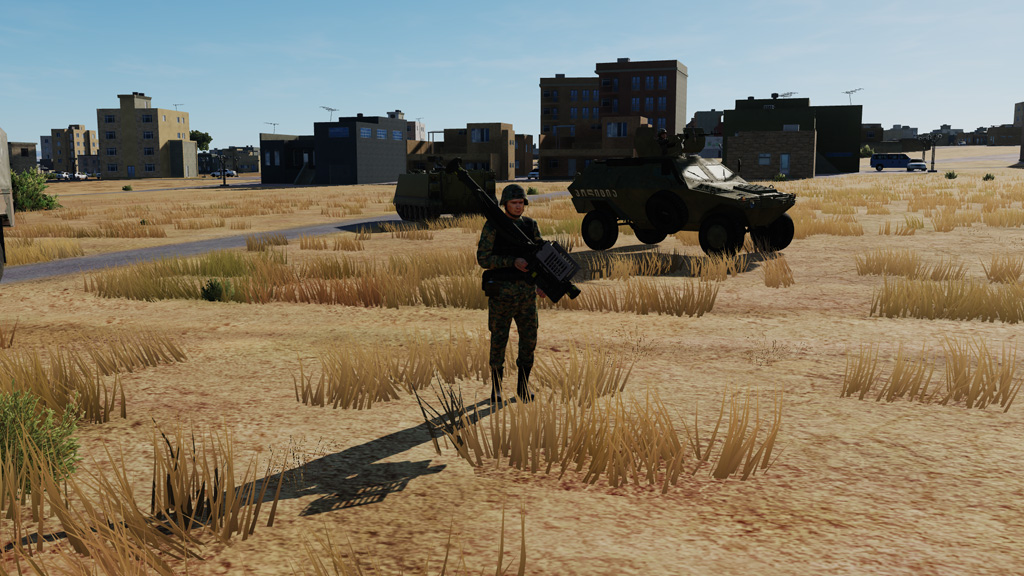
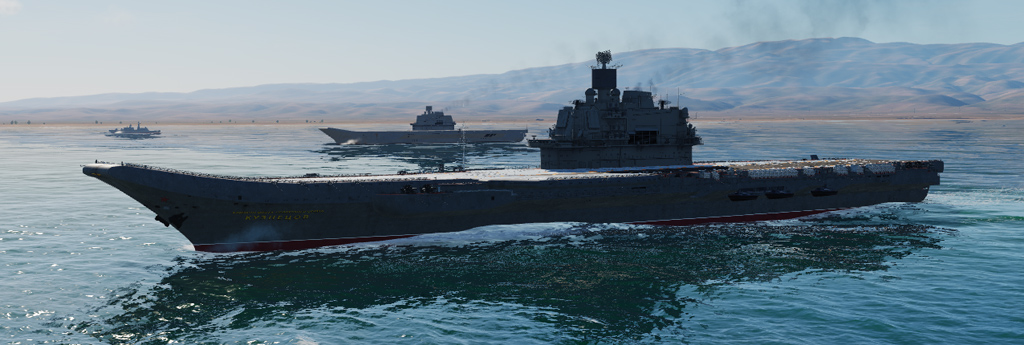
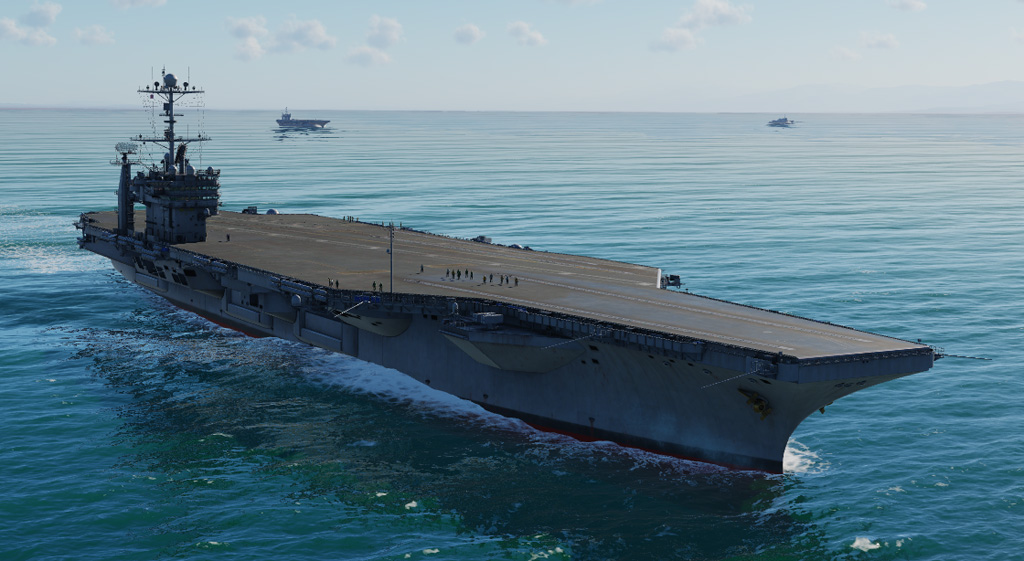
There are ships on both Red and Blue capable of deploying aircraft; these ships should not be attacked by either side. If any ships within these groups are sunk, the scenario is instantly lost for the attacking side. The only exception to this are the two blue ships that anchor in Samandag, southwest of Hatay.
Bassel Al-Assad is a no-fly zone for Blue; any Blue aircraft that breach this area will be fired upon by air defenses and the nearby Red ships.
AI aircraft deplete tactical points based on their value and will cause longer delays in respawns as their value increases. Strategic aircraft like A-50s and E-3s will cause a delay of 5 minutes and two tactical points for every respawn. F-15s and Su-30s likewise cost two points per respawn, though their delay is slightly less. Front line, cheap aircraft like MiG-21 cost only one point and one minute delay. Players can utilize this to their advantage to take control of the air and ground war, as both air and ground forces depend on the same tactical point pool.
Transport helicopters can spawn and ferry two types of infantry teams: a MANPADS team and a mortar team. One team can be spawned per minute per side. MANPADS cannot be controlled by pilots, but mortar teams can be directed to fire by creating a map marker on the firing location and by naming that marker the team’s name. If the target is within range, they will fire; if not, a message will show up indicating it is out of range. It may take up to a minute for a mortar team to deploy their mortars (4 per team). In addition, these infantry groups can be commanded to move with the “MOVE_” prefix followed by the group’s name. They can also be redirected for pickup again with the prefix “EMBARK_” and again followed by the group’s name. For example, an F10 map mark named “EMBARK_B_AIRINF0122” will tell the group B_AIRINF0122 to prepare for pickup.
AI transports are available to ferry support and infantry groups. For blue, there is a CH-47 for troops and a CH-53 for support units. For red, there is a Ka-27 for troops and a Mi-17 for support units. These can be called with the marker command “TROOPREQ” and “SUPTREQ”. They will then fly to the marker position and deploy troops or support units.
Once a support group is present, you can request a FARP pad by placing a marker nearby the group with the command “FARPREQ”. If close enough, an invisible pad will be generated, allowing rearming and refueling. If you wish to upgrade this FARP location into a FOB, you will need to ferry more support groups nearby and then use the command “FOBBIT”. A FOB can be upgraded four times: the first time allows for basic infantry teams to be requested from it; the second time generates SHORAD units for defense; the third time generates an upgraded SHORAD unit; and the fourth time generates a full SAM site as well as allows for all group types to be requested from it.
Transport helicopters have crews that will call out missile launches, so watch for a text readout when near action!
Every airfield, regardless of importance, is supplied by six warehouses; destroying these warehouses can cut supplies off for an airfield, causing any aircraft that spawn at these airfields to become useless. If enemy airpower is becoming a problem, consider coordinating a strike to destroy warehouses!
If an airbase that spawns aircraft falls under the control of the opposite team, any AI aircraft that spawns there will spawn for the controlling team. This makes helicopters highly useful for controlling the battlespace.
Slots
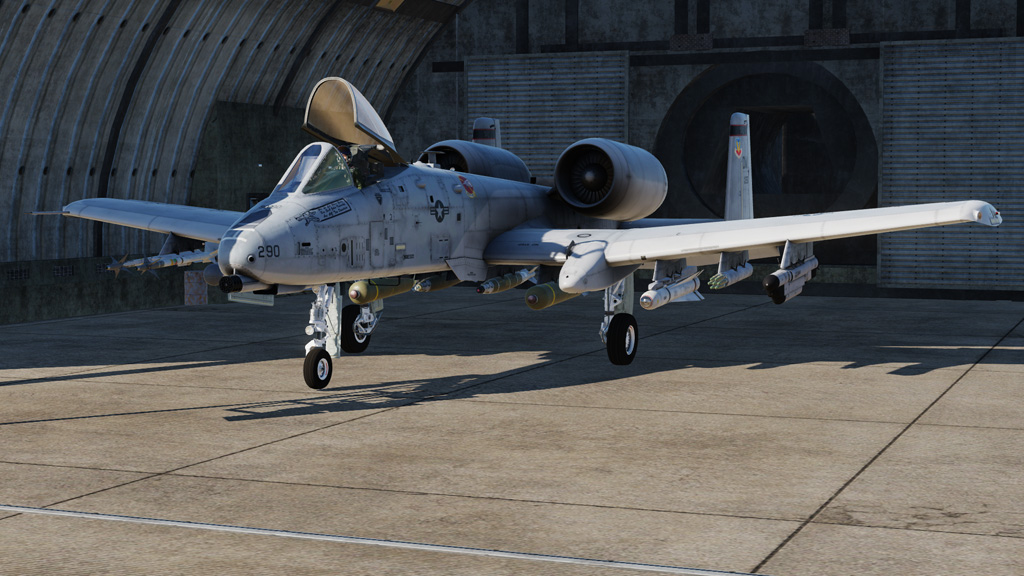

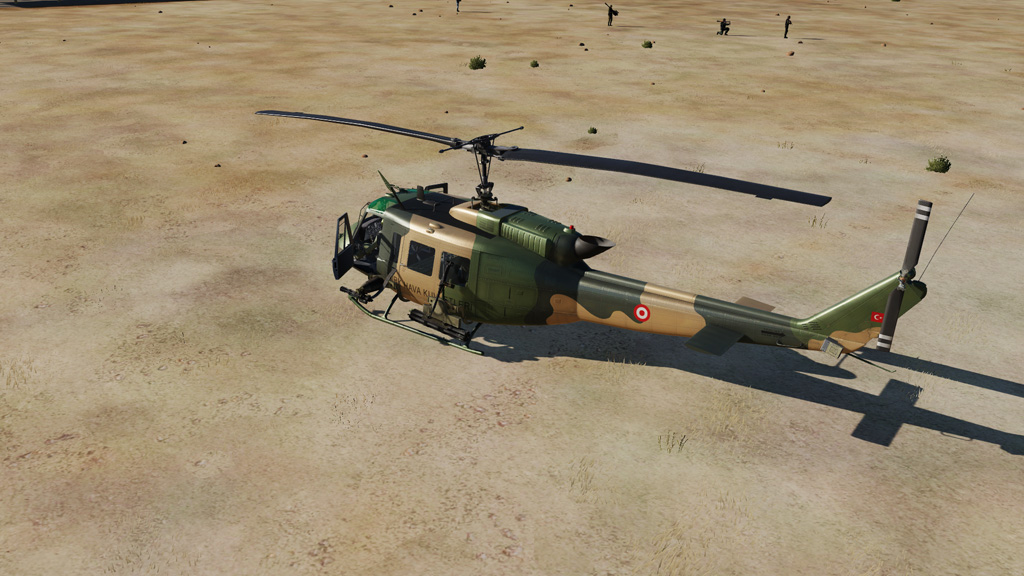
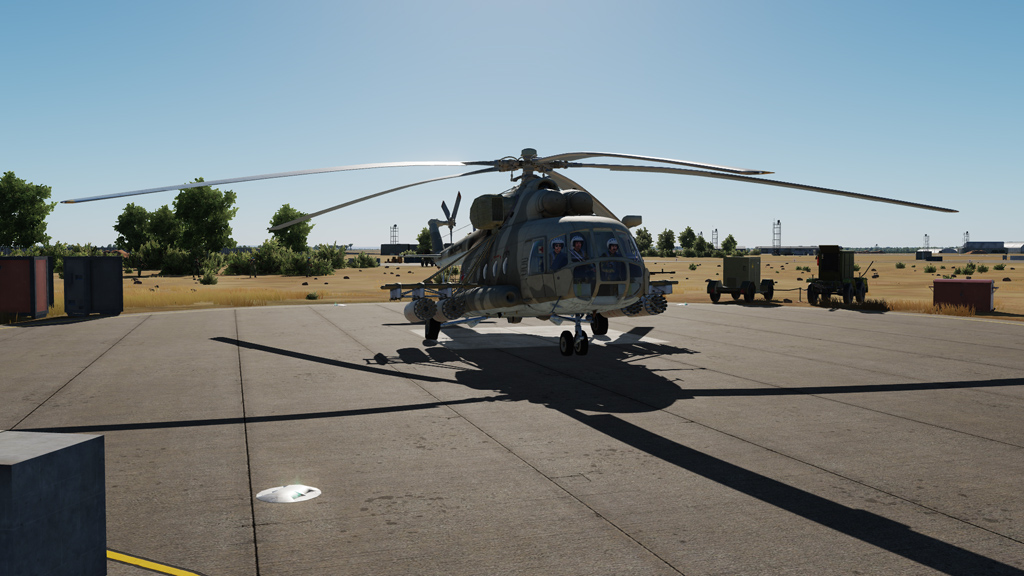
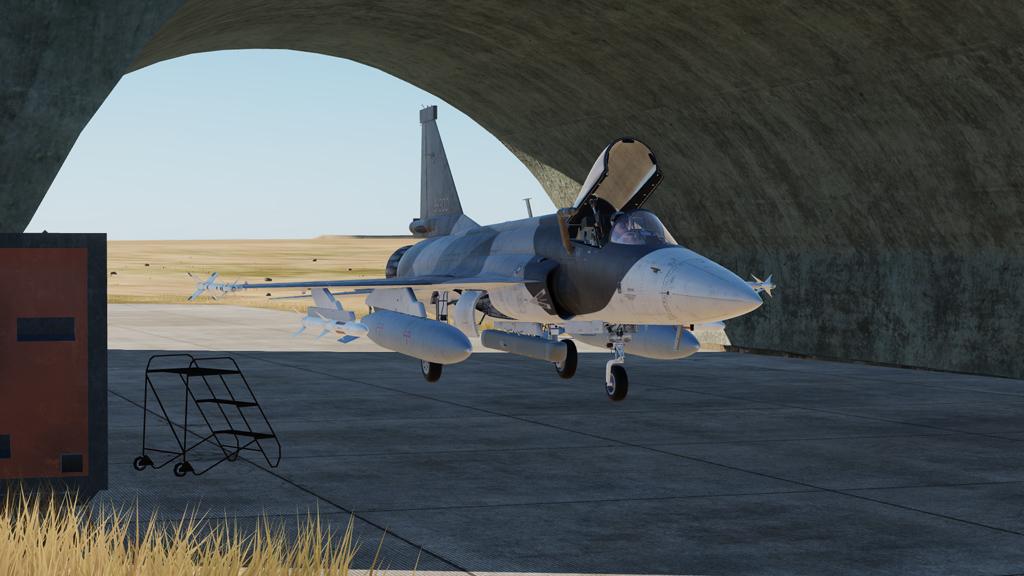
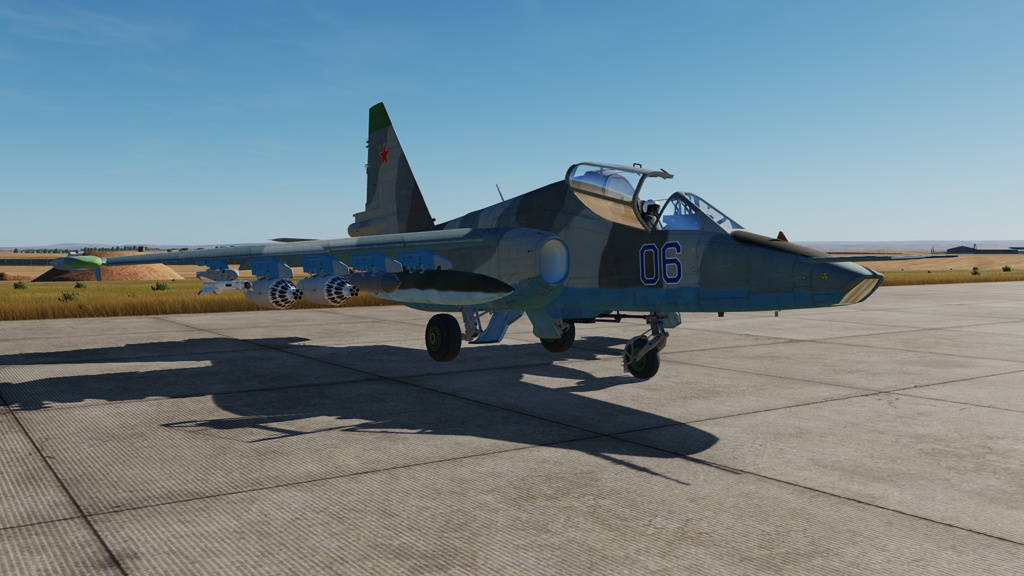
| Blue | 84 |
| A-10A | 2 |
| A-10C | 2 |
| A-10CII | 6 |
| AJS37 | 4 |
| AV-8B NA | 6 |
| C-101CC | 2 |
| F-14B | 8 |
| F-15C | 4 |
| F-16C Blk 50 | 12 |
| F/A-18C Lot 20 | 16 |
| F-5E-3 | 4 |
| M-2000C | 4 |
| Mi-24P | 2 |
| Mi-8MTV | 2 |
| Ka-50-3 | 2 |
| SA342L, M, Mistral | 1 each |
| UH-1H | 4 |
| AH-64D Block II | 12 |
| Tactical Commander | 2 |
| JTAC | 1 |
| Red | 80 |
| J-11A | 4 |
| JF-17 | 10 |
| L-39ZA | 2 |
| MiG-19P | 6 |
| MiG-21Bis | 6 |
| MiG-29A | 4 |
| MiG-29S | 2 |
| Su-25 | 6 |
| Su-25T | 6 |
| Su-27 | 6 |
| Su-33 | 7 |
| F-1CE | 4 |
| Mi-8MTV2 | 4 |
| Mi-24P | 4 |
| Ka-50 | 2 |
| Ka-50-3 | 4 |
| SA342L, M, Mistral | 2 each |
| Tactical Commander | 2 |
| JTAC | 1 |
AI Flights
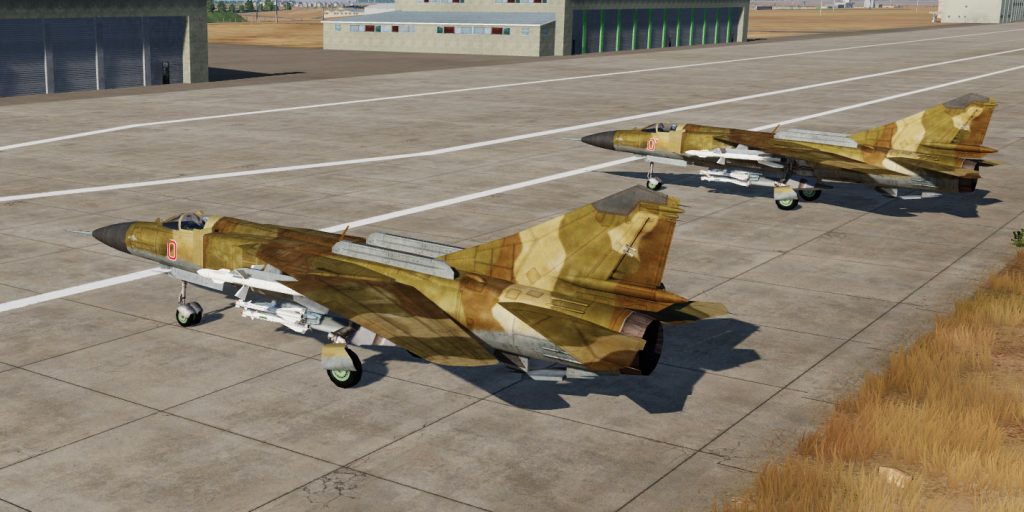
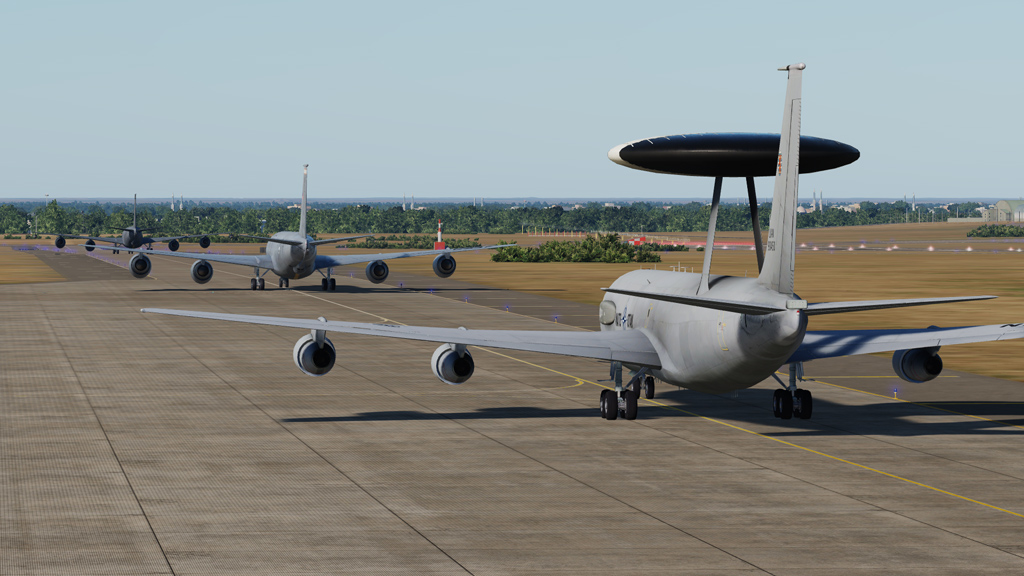
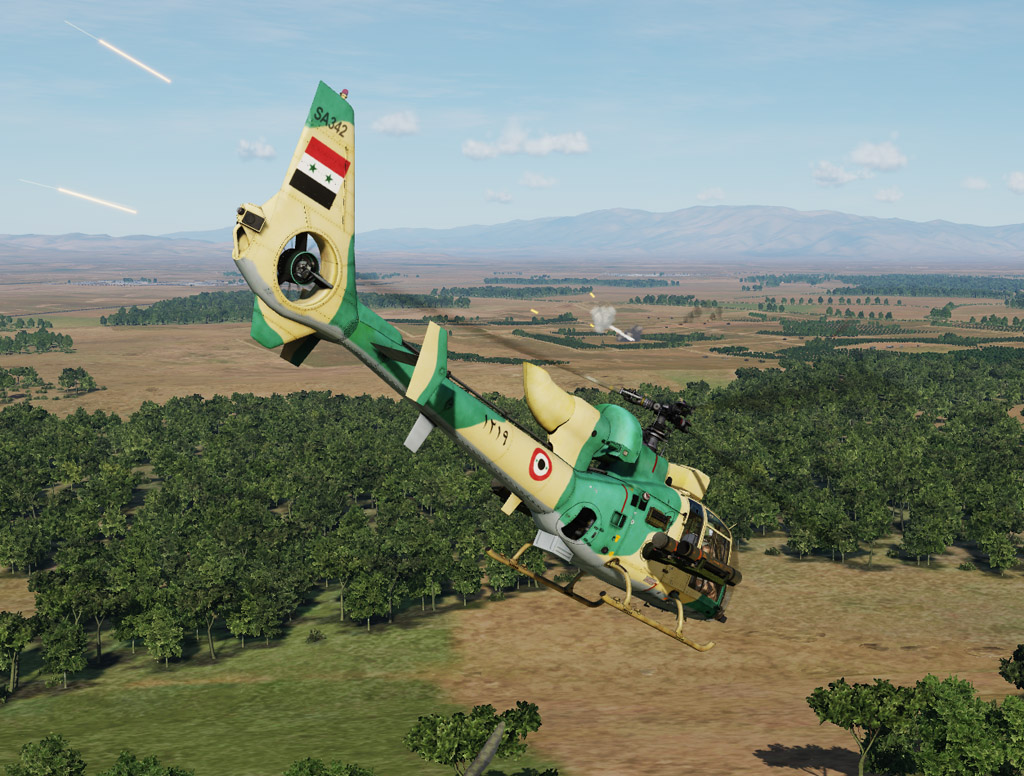
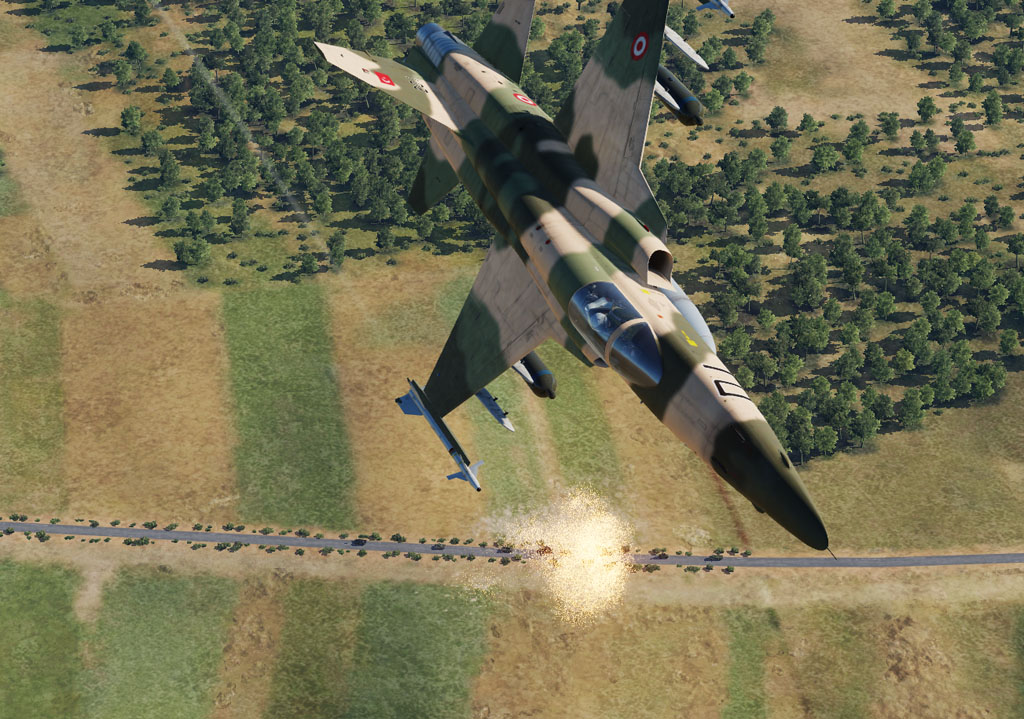
AI elements are significant in the mission: every airfield has at least one set of scramble fighters available, which will start in event that opposing forces get too close to their airfield. This can vary from high tech types such as the J-11s, to second-line MiG-23s. When activated, these aircraft will patrol an area around their airfield and stay active through the duration of the mission.
For frontline forces, there is at least one fast CAS group, one CAP, and one helicopter group for each side. These aircraft concern themselves only with the immediate area around Reyhanli.
Support aircraft are also numerous, consisting of tankers and AWACS. The Blue team has the bulk of these aircraft, with no fewer than 5 tanker and 2 AWACS aircraft present.
If tactical points are depleted, then AI aircraft will not respawn until the points have refreshed.
Note that some AI aircraft have unorthodox loadouts: some older aircraft have weapons that punch well above their weight class!
Each side can request an AI CAP over Reyhanli; Blue gets two F-15Es while Red gets two Su-30s.
Weather
Temperature: 24C
Winds: Light at low altitudes, moderate to high at high altitudes.
Clouds: A few clouds, variable throughout the day.
Signal
Blue
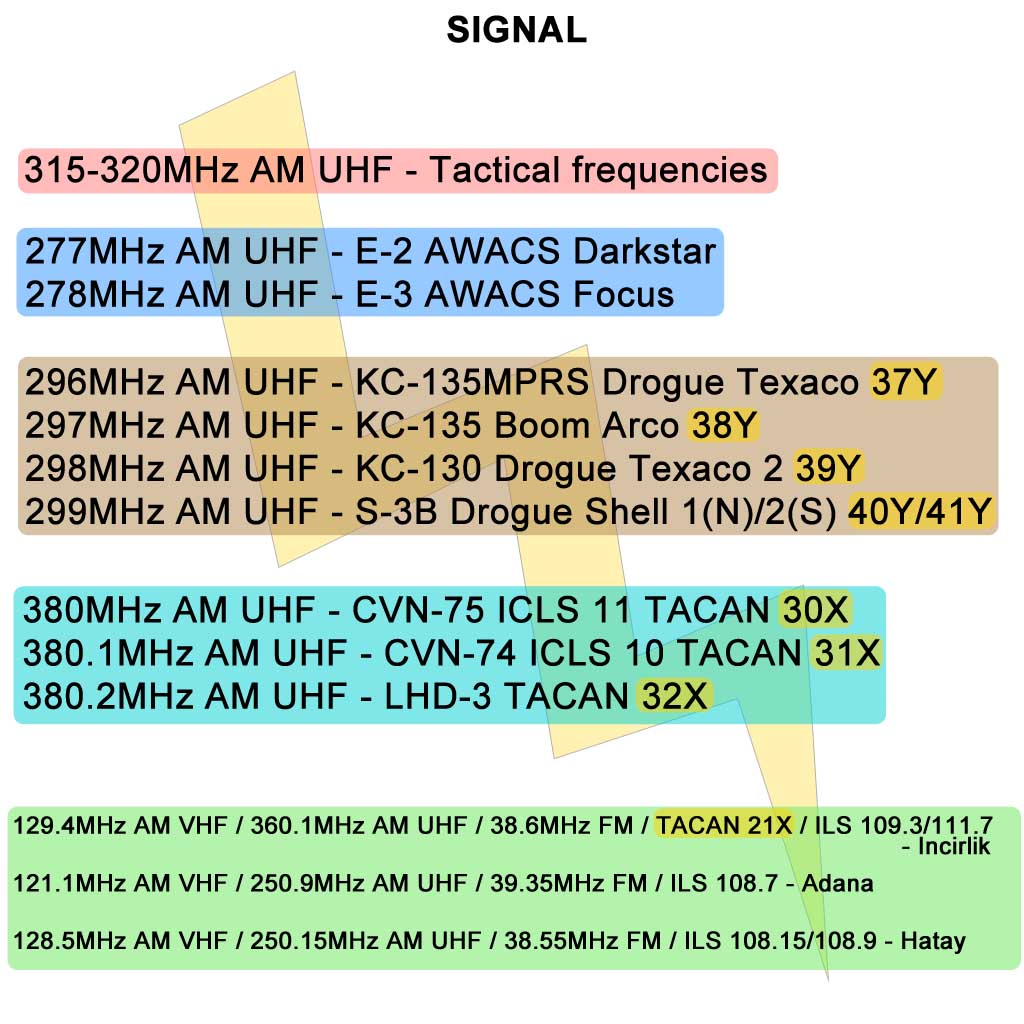
– 315-320MHz AM UHF – Tactical frequencies, default of 315MHz.
277MHz AM UHF – E-2 AWACS Darkstar
278MHz AM UHF – E-3 AWACS Focus
FUELERS:
296MHz AM UHF – KC-135MPRS Drogue Texaco 37Y
297MHz AM UHF – KC-135 Boom Arco 38Y
298MHz AM UHF – KC-130 Drogue Texaco 2 39Y
299MHz AM UHF – S-3B Drogue Shell 1(N)/2(S) 40Y/41Y
380MHz AM UHF – CVN-75 ICLS 11 TACAN 30X
380.1MHz AM UHF – CVN-74 ICLS 10 TACAN 31X
380.2MHz AM UHF – LHD-3 TACAN 32X
129.4MHz AM VHF / 360.1MHz AM UHF / 38.6MHz FM / TACAN 21X / ILS 108.4 – Incirlik airbase
121.1MHz AM VHF / 250.9MHz AM UHF / 39.35MHz FM / ILS 112.7 – Adana airfield
128.5MHz AM VHF / 250.15MHz AM UHF / 38.55MHz FM – Hatay airfield
Red
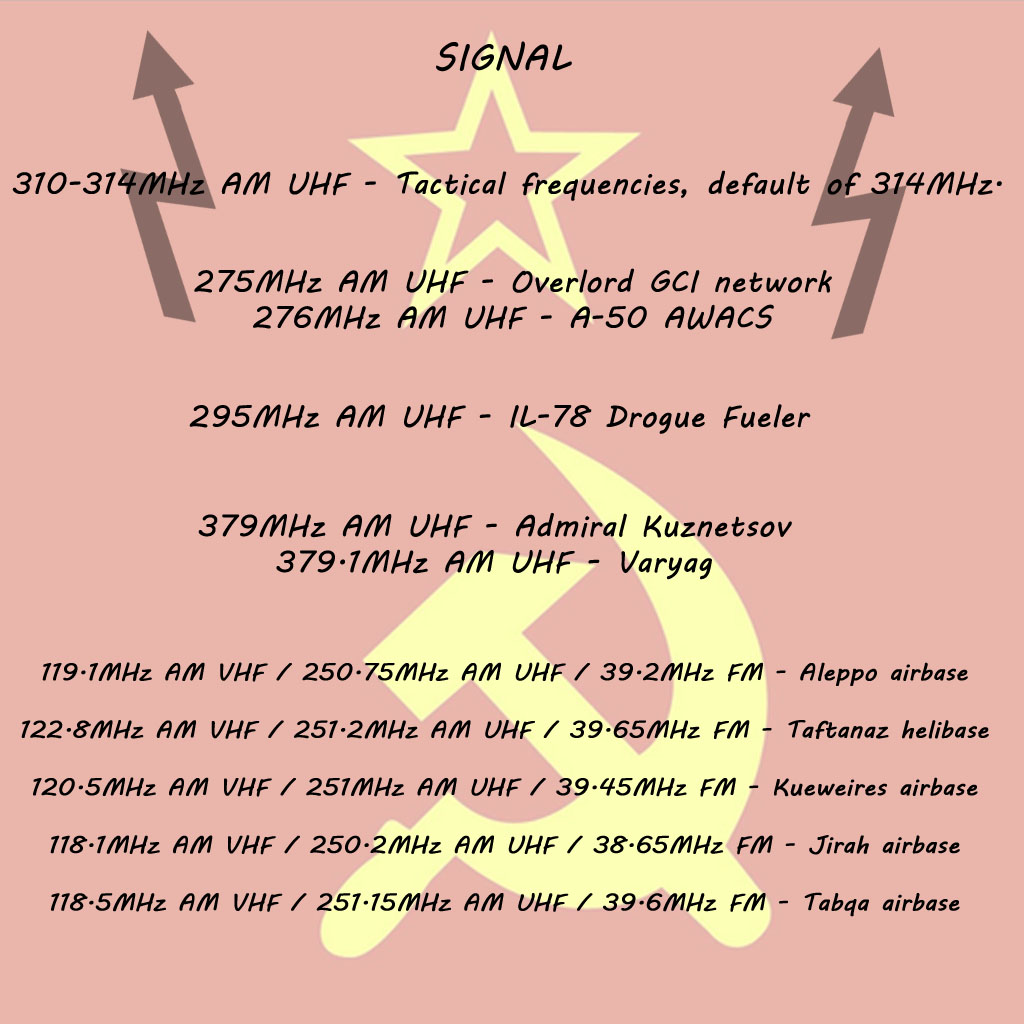
310-314MHz AM UHF – Tactical frequencies, default of 314MHz.
275MHz AM UHF – Overlord GCI network
276MHz AM UHF – A-50 AWACS
295MHz AM UHF – IL-78 Drogue Fueler
379MHz AM UHF – Admiral Kuznetsov
379.1MHz AM UHF – Varyag
119.1MHz AM VHF / 250.75MHz AM UHF / 39.2MHz FM – Aleppo airbase
122.8MHz AM VHF / 251.2MHz AM UHF / 39.65MHz FM – Taftanaz helibase
120.5MHz AM VHF / 251MHz AM UHF / 39.45MHz FM – Kueweires airbase
118.1MHz AM VHF / 250.2MHz AM UHF / 38.65MHz FM – Jirah airbase
118.5MHz AM VHF / 251.15MHz AM UHF / 39.6MHz FM – Tabqa airbase
